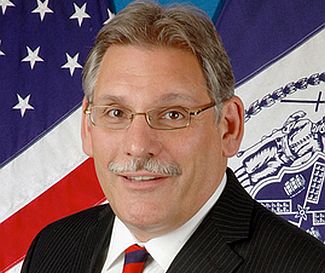
By Robert Martinez, Deputy Commissioner, New York City Police Department
When I started to think about a title for this column, a lot of different ideas came to mind: “The Flavor of the Day” or “Four-Year Election Cycles” or “Going Green Again” or “More Budget Cuts” or “Will the Real Fleet Expert Please Stand Up?” or “Do More with Less.” These alternative titles are just the tip of the iceberg when it comes to listing the challenges in the world of government fleet management.
Day in and day out, fleet managers are pulled in many different directions. Some fleet managers are a one-man show, while some have a staff of more than four hundred people. There are fleets of five vehicles and fleets of 50,000 vehicles. There are various different types of vehicles and different makes and models as well. The last time I checked, the NYPD had more than 150 different vehicle types, makes and models.
Along with different types of vehicles there are different kinds of employees working within fleets. Fleet titles include mechanics, helper mechanics, parts personnel, various supervisory positions, purchasing personnel, cleaners, and dispatchers, to name a few. These are issues that affect the daily lives of fleet managers both inside and outside government. But what’s unique to government fleets is the fact that politics affects how they’re run and managed at every level of the food chain. This additional factor results in government fleet managers having their hands full, and the stress that goes with it can make the gray hair come quickly.
Let’s talk about budgets. Government fleet managers have a few different types of budgets — or, as we refer to them, “funding sources”. The three most common types of budget are capital, expense and grant. Capital funds are used for things that are more expensive and have a longer lifecycle. New York City’s criteria for capital funds are vehicles that cost more than $35,000 and can transport more than five people, and have a life cycle of more than five years.
Expense funding is allocated to acquire vehicles which cost less than $35,000 and have a life cycle of less than five years.
Grant vehicle funding can be used to purchase vehicles without restriction on vehicle price or lifecycle, but vehicles acquired with grant money can only be used for dedicated purposes or special program.
Then we have the bean counters, the accountants, who have the toughest job of all. They are stuck between the politicians, on the one hand and, on the other, the fleet managers who are trying to operate their fleets in the most cost-efficient way.
The fleet manager needs to manage the within the limits of the available budget and at the same time meet the operational needs of their fleet. Managing a fleet is a balancing act of living within the limits of available funds while keeping the fleet operators safe. The other balancing act is buying the right vehicles that meet the mission of the operator and support the planned-for lifecycle for the type of vehicle being used.
Budgets are developed and voted on at every level of government, city, country, state and federal. When it’s time to cut a budget, the accountants start looking at the largest one first. In every government, the largest budget is always personnel. For the past few years, at least, and in past years fleet has been number two. This dynamic has changed a little in recent years, with information technology edging out fleet as a higher priority for spending at some levels of government throughout the United States.
Now, let’s talk about politics. Some politicians are self-proclaimed fleet experts and others will respect your experience. Whatever the case, politicians and their term limits add an interesting dynamic to the world of government fleet management. All elected government officials have term limits. Some are only for two years and some up to six years, and some with a limit on the number of times they can be re-elected. These terms can affect the direction in which a government fleet might be going.
This is what I call “the flavor of the day” because the strategic direction of a fleet depends a lot on the politician or politicians calling the shots. Political pressure changes depending on the economy and available funding from federal and state support, as well as local taxes. Many politicians will also come in with their own agendas and pet projects. This is when the fleet manager must switch gears and sometimes disregard what was done for the past few years and move in a new direction. Sometimes, this even happens in the middle of a project.
Finally, let’s talk about fleet personnel. It’s a fact that the all-star team is not always on the government payroll. Government fleet managers are given a fairly inflexible set of employees and are expected to make everything work. That is often easier said than done, because most government employees are protected by civil service rules, meaning they take a civil service test and after a year of employment they become permanent. Most of these employees are also are members of a union. That said, if you were lucky enough to have an all-star team. congratulations! Unfortunately, though, that’s not as common as you would hope.
I am one of the luckiest fleet managers because my team is very close to being an all-star team. The frustrating part is that if you do have an underperforming employee it is very difficult to fire or transfer that employee.
After putting this article together, I have a better idea about what happened to both the color and quantity of my hair. Being a government fleet manager is probably one of the most challenging but also most rewarding jobs anybody could have.
Government fleet managers get to see the fruits of their labor every day. Whether it’s a fire truck or a police car responding to an emergency or sanitation truck picking up garbage, the fleet manager is making it happen.
Government fleet managers should never discount the importance of the job they do. No fireman, policeman or sanitation worker could even do their job without a well-equipped and safe fleet.
I want to thank all the government fleet managers for all they do every day and for playing their role in public safely.




